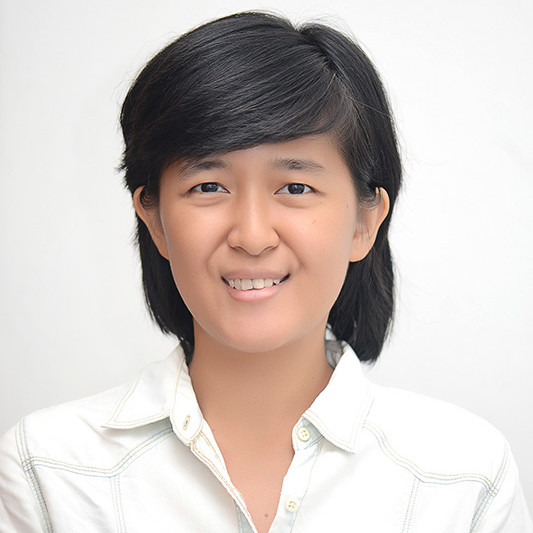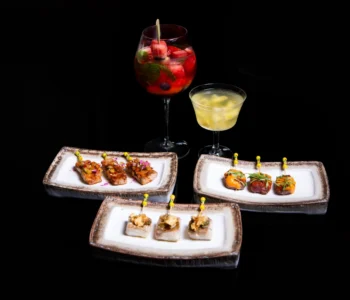The biggest contemporary ceramics biennale in Southeast Asia, also known as the Jakarta Contemporary Ceramics Biennale, is back for the fourth time. The event was officially opened at Galeri Nasional in early December and will last until January 2017, taking on the theme “Ways of Clay: Perspectives towards the Future”.
 “Ceramics are not only meant for decoration but more as a medium to create new things, new forms of artworks. All of the ceramics on the current display embody novelty. I hope that this exhibition, which takes place every two years, will gain public appreciation and be an inspiration to us all,” Galeri Nasional Indonesia Chairman Tubagus Andre Sukmana said at the official grand opening. As many as 41 local and international artists from diverse backgrounds are taking part in the art exhibition that aims to parlay the history and the dynamics of clay and ceramics. Russian artist Masha Ru, for example, is a trained mathematician and photographer, while Yogyakarta-based artist Uji “Hahan” Handoko is a painter. Neither have been trained or educated in ceramic art. “Compared to the last biennale, this year’s event has piqued more interest from local and international artists. It’s a coincidence that roughly 60 percent of the participating artists this year are foreigners. It’s actually something we didn’t expect. The artists perceive clay as the origin of human being, which is why the artworks here are all related to that concept,” said the exhibition’s curator Nurdian Ichsan.
“Ceramics are not only meant for decoration but more as a medium to create new things, new forms of artworks. All of the ceramics on the current display embody novelty. I hope that this exhibition, which takes place every two years, will gain public appreciation and be an inspiration to us all,” Galeri Nasional Indonesia Chairman Tubagus Andre Sukmana said at the official grand opening. As many as 41 local and international artists from diverse backgrounds are taking part in the art exhibition that aims to parlay the history and the dynamics of clay and ceramics. Russian artist Masha Ru, for example, is a trained mathematician and photographer, while Yogyakarta-based artist Uji “Hahan” Handoko is a painter. Neither have been trained or educated in ceramic art. “Compared to the last biennale, this year’s event has piqued more interest from local and international artists. It’s a coincidence that roughly 60 percent of the participating artists this year are foreigners. It’s actually something we didn’t expect. The artists perceive clay as the origin of human being, which is why the artworks here are all related to that concept,” said the exhibition’s curator Nurdian Ichsan.  In the run up to the biennale, artists were invited to join a residency programme with ceramic studios and producers in Java and Bali, from August to November 2016. Twenty artists took up the opportunity, including Angie Seah from Singapore, Joris Link from the Netherlands and Arya Pandjalu from Indonesia. They were then provided with the option to choose the location of the residency – Bandung, Majalengka, Yogyakarta, Semarang or Bali. Later, they were also invited to choose a partnering establishment from a long list of institutions, such as the Art and Design Faculty of Institut Teknologi Bandung, Jatiwangi Art Factory in Majalengka, Timboel Rahardjo Studio Kasongan in Yogyakarta, Sango Ceramics in Semarang and Agung Ivan Studio in Bali. Organisers are planning to conduct the residency on a regular basis, citing three main reasons: to socially and culturally engage the artists with their surrounding environment; to provide a stronger connection between the artists and the local or host community; and to help activate and enrich ceramic art by linking the artists with art institutions, ceramic studios and factories and traditional ceramic producers. The result has been impressive. Take for example, Hahan the painter from Yogyakarta, who managed to create a row of eight half-meter-tall ceramic statues in white, dark blue and dark purple in a work he called “Liability: Between Lack and Achievement” – inspired by his stay at Sango Ceramics in Semarang.
In the run up to the biennale, artists were invited to join a residency programme with ceramic studios and producers in Java and Bali, from August to November 2016. Twenty artists took up the opportunity, including Angie Seah from Singapore, Joris Link from the Netherlands and Arya Pandjalu from Indonesia. They were then provided with the option to choose the location of the residency – Bandung, Majalengka, Yogyakarta, Semarang or Bali. Later, they were also invited to choose a partnering establishment from a long list of institutions, such as the Art and Design Faculty of Institut Teknologi Bandung, Jatiwangi Art Factory in Majalengka, Timboel Rahardjo Studio Kasongan in Yogyakarta, Sango Ceramics in Semarang and Agung Ivan Studio in Bali. Organisers are planning to conduct the residency on a regular basis, citing three main reasons: to socially and culturally engage the artists with their surrounding environment; to provide a stronger connection between the artists and the local or host community; and to help activate and enrich ceramic art by linking the artists with art institutions, ceramic studios and factories and traditional ceramic producers. The result has been impressive. Take for example, Hahan the painter from Yogyakarta, who managed to create a row of eight half-meter-tall ceramic statues in white, dark blue and dark purple in a work he called “Liability: Between Lack and Achievement” – inspired by his stay at Sango Ceramics in Semarang.  “I noticed that they would dump good ceramics just because of some small defects, like a little scratch. Those things they deem worthless or of less quality actually mean something to me. At Sango I was also given an opportunity to learn anything I wanted to know, such as plating and oxidation,” said Hahan. Aside from the works of those attending residency, there were some other equally amazing art pieces present at the exhibition, such as “Greedy” by Eddie Prabandono. Through a very tall stack of white ceramic plates, each filled with dirt and rice, placed on top of a wooden chair, Prabandono wanted to convey self-criticism. “The whole thing represents greed. As you’ve seen on the news, a number of high-ranking officials have been caught by Corruption Eradication Commission for alleged graft. The higher their position is, the greedier they tend to be. But I also worry that perhaps, if I ever were in such a [powerful] position, I could do the same thing [graft]. I mean, who knows, right? So, it is like a self-introspection too,” said Prabandono.
“I noticed that they would dump good ceramics just because of some small defects, like a little scratch. Those things they deem worthless or of less quality actually mean something to me. At Sango I was also given an opportunity to learn anything I wanted to know, such as plating and oxidation,” said Hahan. Aside from the works of those attending residency, there were some other equally amazing art pieces present at the exhibition, such as “Greedy” by Eddie Prabandono. Through a very tall stack of white ceramic plates, each filled with dirt and rice, placed on top of a wooden chair, Prabandono wanted to convey self-criticism. “The whole thing represents greed. As you’ve seen on the news, a number of high-ranking officials have been caught by Corruption Eradication Commission for alleged graft. The higher their position is, the greedier they tend to be. But I also worry that perhaps, if I ever were in such a [powerful] position, I could do the same thing [graft]. I mean, who knows, right? So, it is like a self-introspection too,” said Prabandono.  Visitors coming to the exhibition will find plenty of beautiful and timeless art works, such as “Stargazed” by Swedish artist Eva Larsson. The art piece features 14 male and female figures made from raku clay. Each figure is roughly 30 centimeters in height, some placed on a black table with heads looking up and hands stretched out while others look down on them as they climb on thin ropes attached to the ceiling. “It is actually about friendship, how you help your friends accomplish things. About encouraging each other to do his or her own thing, go your own way, all while helping each other,” said Larsson. The fourth Jakarta Contemporary Ceramics Biennale is held at Buildings A, B and C of Galeri Nasional Indonesia from 7 December 2016 to 22 January 2017, from 10:30 AM to 6 PM, with free entrance. It is a cooperative collaboration of Galeri Nasional Indonesia, National Ministry of Education and Culture, Indonesian Creative Economy Agency (BEKRAF), MetroTV and the art organisation Bumi Purnati Indonesia.
Visitors coming to the exhibition will find plenty of beautiful and timeless art works, such as “Stargazed” by Swedish artist Eva Larsson. The art piece features 14 male and female figures made from raku clay. Each figure is roughly 30 centimeters in height, some placed on a black table with heads looking up and hands stretched out while others look down on them as they climb on thin ropes attached to the ceiling. “It is actually about friendship, how you help your friends accomplish things. About encouraging each other to do his or her own thing, go your own way, all while helping each other,” said Larsson. The fourth Jakarta Contemporary Ceramics Biennale is held at Buildings A, B and C of Galeri Nasional Indonesia from 7 December 2016 to 22 January 2017, from 10:30 AM to 6 PM, with free entrance. It is a cooperative collaboration of Galeri Nasional Indonesia, National Ministry of Education and Culture, Indonesian Creative Economy Agency (BEKRAF), MetroTV and the art organisation Bumi Purnati Indonesia.  Galeri Nasional Indonesia Jl. Medan Merdeka Tim. No.14, RT.6/RW.1, Gambir, Central Jakarta +62-21 3813021 www.jccbindonesia.org
Galeri Nasional Indonesia Jl. Medan Merdeka Tim. No.14, RT.6/RW.1, Gambir, Central Jakarta +62-21 3813021 www.jccbindonesia.org







